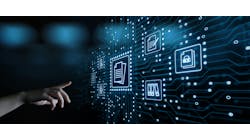The adoption of electronic invoicing (eInvoicing) in the European Union is a significant step toward digitalizing and streamlining financial transactions across member states. The need for efficiency, accuracy and security in invoicing practices drives this transformation. The adoption of eInvoicing has been progressively rolling out across the EU since Denmark formalized it in 2005. The objective is to minimize the fragmentation of invoicing processes while providing a path to adoption across member states.
It may seem trivial to say that invoicing must be conducted electronically; it is anything but. It required the careful coordination of international regulations, digital technologies and the interoperability of business systems. Leading digitalization specialists, such as Orbweaver, play a crucial role in this transition, dramatically shortening the implementation pathway from months to days, illustrating the complexity and strategic importance of eInvoicing.
Member States are Making eInvoicing Mandatory
With the implementation of Directive 2014/55/EU in April 2019, member states are increasingly mandating eInvoicing in public procurement. This directive is not merely a regulatory requirement; it is a strategic initiative designed to standardize eInvoicing practices throughout the European Union.
The directive's implementation is a testament to the EU’s commitment to fostering a digitally unified market, aiming to standardize the electronic exchange of invoice data across its member states. This effort aims to eradicate the inefficiencies and discrepancies that have long plagued the procurement process, replacing them with a streamlined, transparent and highly efficient digital system.
Adoption Status Across the EU
The adoption of eInvoicing has varied across the EU, with some countries like Italy, Germany and France leading the charge by mandating eInvoicing for B2G (Business to Government) and B2B transactions. Other countries are at different stages of implementing these directives, working towards full compliance. This demonstrates a concerted effort toward a unified digital market, though the pace of adoption may vary due to national priorities and the readiness of technological infrastructure.
Who is Affected by the Regulation
The regulation primarily affects public sector entities that engage in procurement activities, requiring them to accept and process eInvoices. Additionally, suppliers to these entities must comply by issuing eInvoices in the standardized format. Over time, the private sector will notice the benefits of eInvoicing, and more entities will adopt eInvoicing for B2B transactions.
Transactions Types Affected by the Regulation
The directive explicitly affects transactions within the EU, mandating the use of eInvoicing for public procurement activities. This standardization is exclusive to the EU, meaning these regulations do not directly affect the UK post-Brexit; however, businesses within the EU engaging in transactions with UK partners may still influence adoption practices.
Technical Background on EN16931
At the core of Directive 2014/55/EU lies EN16931, a critical component that establishes the technical bedrock for eInvoicing across the European Union. EN16931 delineates a comprehensive set of requirements essential for achieving a standardized and efficient digital invoicing ecosystem. The requirements include:
Semantic Data Models of Invoices
EN16931 is a semantic data model for eInvoices that ensures invoices can be understood and processed across different countries and sectors. It defines the necessary data components—like supplier and buyer details, payment terms, and descriptions of goods or services—to preserve the essence of an invoice.
The Syntax Associated with the Data Model
EN16931 prescribes the syntax or the structured format in which this data is presented. This ensures not only the readability of invoices by humans but also their interpretability by various software systems used across the EU. By standardizing the syntax, EN16931 facilitates the automatic processing of invoices, significantly reducing errors and inefficiencies associated with manual handling.
Binding Languages and Mapping Guidelines
To bridge the diverse IT landscapes across the EU, EN16931 introduces binding languages and mapping guidelines. These tools enable different electronic invoicing and accounting systems to “speak” to each other, translating invoice data into formats that each system can understand. This interoperability is crucial for ensuring that businesses, regardless of size or sector, can participate in the digital single market without the need for costly system overhauls.
Transmission Interoperability
A key element of EN16931 is its focus on transmission interoperability. This element ensures that eInvoices can be transmitted seamlessly between different systems and across borders. Whether through direct integration, Electronic Data Interchange (EDI), or cloud-based platforms, EN16931 supports a variety of transmission methods, making it easier for businesses to send and receive invoices electronically.
Cross-Border Standardization
Perhaps the most ambitious goal of EN16931 is the facilitation of cross-border standardization. By establishing a uniform set of requirements for eInvoicing, the EU aims to remove the technical barriers that have historically impeded the free flow of goods, services and payments. This standardization is a critical step toward realizing the vision of a digital single market, where businesses can operate as effortlessly across borders as they do within their own countries.
The Benefits of eInvoicing
Well-defined Standard of Transmission
The EN16931 standard provides a well-defined framework for eInvoice transmission, ensuring compatibility and interoperability across the EU. This standard facilitates seamless cross-border transactions, reducing the complexity and potential errors associated with manual processing. Such errors are known to cause significant delays and lost revenue.
Efficiency
eInvoicing significantly reduces processing time and costs by automating invoice generation, submission and processing. This automation streamlines workflows, reduces paper use and accelerates the payment cycle, benefiting both issuers and recipients of invoices. This efficiency is only realized when the involved parties use a standard digital language.
Security Against Bad Actors
Digital invoicing includes robust security measures to protect against fraud and unauthorized access. eInvoicing ensures the integrity and confidentiality of financial transactions by utilizing encryption and secure data transmission. Transactions involving small-to-medium enterprises and cross-border transactions are primarily susceptible to the invoice fraud that the directive seeks to eliminate.
Challenges of Implementing eInvoicing
Migration of Older Methods and Adopting New Formats
Transitioning from traditional invoicing methods to a standardized electronic format requires significant changes in business processes. Companies must invest in new technologies or upgrade existing systems to comply with the EN16931 standard. Large enterprises might be well-equipped to handle such requirements, but less well-resourced SMEs may need help with implementation.
Connecting to Existing Systems
Integrating eInvoicing solutions with current financial and operational systems poses technical challenges. Businesses must ensure compatibility to maintain smooth operations, requiring technical expertise and potentially costly system modifications. Being able to electronically invoice is only part of the efficiency gain. To fully unlock the benefits of digitalization, business systems such as ERPs, MRPs and CRMs must seamlessly integrate into the invoicing and accounting systems.
Transactions Outside of the EU
Directive 2014/55/EU specifically covers the EU. The UK has eInvoicing covered by an optional Procurement Policy Note. The US has no national eInvoicing mandate, but individual entities already know the benefits. Asia presents a much more diverse picture, with some countries like South Korea having robust eInvoicing practices and others with no such digitalization. The differences between EU eInvoicing regulations and international practices can be complex for EU businesses engaging in transactions with non-EU countries. This necessitates flexible solutions that can adapt to various standards and requirements.
The Solution
Directives like 2014/55/EU provide a regulatory framework for eInvoicing, setting the stage for digital transformation in invoicing processes across the European Union. Yet, the practical implementation rests with individual businesses, each confronting unique challenges related to compliance and operational integration. For many, particularly in the resource-constrained context of the electronics industry, achieving more than the minimum compliance requires considerable effort and expertise.
Orbweaver offers a precise, technically robust solution tailored to the electronics industry. A middleware fluent in the specific needs of the electronics industry and familiar with essential trade document transfer technologies like EDI, XML, ETL and flat files, Orbweaver simplifies the complex process of eInvoicing implementation. It enables businesses to not only comply with EU regulations but also to enhance their operational efficiency and data management practices.
The platform’s core strength lies in its ability to facilitate the integration and seamless movement of large volumes of data, ensuring businesses can maintain their workflows while transitioning to digital invoicing systems. Orbweaver also supports interoperability, connecting companies with global trading partners through a common platform, regardless of differing invoicing standards.
Orbweaver’s approach is straightforward and effective, providing a reliable solution for companies looking to navigate the eInvoicing mandate with minimal disruption to their existing operations.
Conclusion
Adopting eInvoicing in the EU marks a pivotal move towards a digitalized, efficient and secure trading environment. While the journey toward full implementation presents challenges, the benefits—from enhanced efficiency to improved security—underscore the value of transitioning to electronic invoicing. With solutions like Orbweaver providing the necessary middleware support, businesses can navigate the complexities of eInvoicing adoption, ensuring compliance and connectivity in a rapidly evolving digital marketplace.








